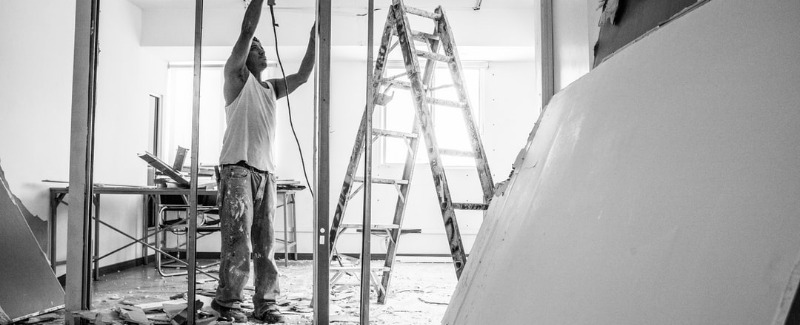Understanding Roof Load
Contents
Roofs are designed to support particular dead and live loads. Local building codes dictate the minimum requirements for load-bearing as well as the deflection limit, which is the acceptable rafter bend. An architect uses this information to determine rafter span, and published span tables indicate what types of wood and what lumber dimensions are suitable for that span.
Roofs are under a great deal of pressure at all times and are designed to support and distribute that weight in a way that allows it to remain stable. This is a delicate balance, and if that balance is disturbed, then major damage that requires the attention of an Austin roofing professional can occur. In order to remain in place and intact, a roof must support permanent load, but it must also be able to account for temporary loads, such as accumulating snow or contractors walking on it.
Dead Load
The dead load is the permanent load on a roof. The dead load not only includes the weight of the framing and the pressure generated by the design, but also any permanently attached items, including sheathing, underlayment, shingles and roof protrusions. Load on a roof is measured in pounds per square foot or psf. A typical residential roof framed with wood and covered by standard asphalt shingles has a dead load of approximately 15 psf. A roof with clay tiles can have a dead load twice that amount.
Live Load
The live load is the temporary load on a roof. Temporary loads are based on reasonable expectations and are usually defined in local building codes. Snow and workers are the two most important factors that live load account for, and therefore, roofs in the south tend to be designed for a lower live load than those in the north.
Upload Lift
When a roof is designed, it is planned based on the dead load plus the live load plus any necessary slope correction due to the angle of the roof.
There is also a kind of load called an uplift load, which is generated when wind energy disperses. Wind with a speed of 90 mph can exert upward forces on a roof as high as 20 psf. Generally, the dead load of a roof, which pushes downward, is enough to counteract this. However, in areas that regularly experience high winds, the local building code may call for added support or for specific roof features that better displace the wind energy.
Roof load matters because it determines what homeowners can and cannot do with their roofs without a major structural renovation. If a homeowner wants to install solar panels, then the load must be considered because the solar panels will permanently increase the dead load and permanently decrease the live load. Likewise, slate roofs often have a psf that is more than twice as much as an asphalt roof, which is why slate roofs often require structural upgrades prior to installation.
Load Bearing Capacity
The load-bearing capacity of a roof is how much weight it is able to support. Just as a home’s foundation has to hold up the weight that is placed upon it, a roof has to be able to handle the weight on it. Load-bearing walls and support structures in a home pass along weight to the foundation. With a roof, beams, joists, and trusses work in a similar manner to provide support for the roof.
Roofing materials themselves tend to not be very heavy, but Austin roofing may have to hold up an enormous amount of weight. Shingles, a roof deck, and weatherproofing may actually be fairly lightweight, especially since this weight is spread evenly over a roof. However, a roof will also have to hold up a variety of things, like chimneys, HVAC systems, and solar equipment.
A roof is also likely to need to hold up an enormous amount of weight in the winter when it snows. Therefore, it is important that a roof’s load-bearing capacity well exceeds the load roofing materials will place upon it.
It is essential to keep the weight on a roof from exceeding its load-bearing capacity because it could cause the roof to collapse. One of the common reasons for a roof collapse is when there is a large amount of standing water on a roof.
When it rains heavily or for several days in a row, water may remain on the roof, normally either in depression or an area where it cannot easily flow off, such as where two sections of the roof meet. Water that has been on a roof for more than 48 hours is considered to be standing water, and it can add an enormous burden to a roof.
One inch of water over a one-square-foot area weighs five pounds. An inch of water spread over 10 square feet means 500 extra pounds of weight for a roof to hold. When water pools on a roof, it tends to make the roof sag due to the weight, allowing more water and weight to gather.
Ice dams can do something similar, but a depression in a roof isn’t required. When the snow melts and refreezes again at the edge of a roof, until the ice melts again, water cannot flow off of a roof. This creates a situation where enormous amounts of water may be adding weight to a roof, on top of the weight of snow.
How are load limits used in the design of a roof?
Roofs are designed to support particular dead and live loads. Local building codes dictate the minimum requirements for load-bearing as well as the deflection limit, which is the acceptable rafter bend. An architect uses this information to determine rafter span, and published span tables indicate what types of wood and what lumber dimensions are suitable for that span.
How can someone tell if a wall is a load-bearing wall?
It is essential that load-bearing walls are identified if someone wants to have work done on their home. These walls generally flow from one level of a home to another, and they often have floor joists or supports above them. However, it is best left to a professional to identify load-bearing walls.







